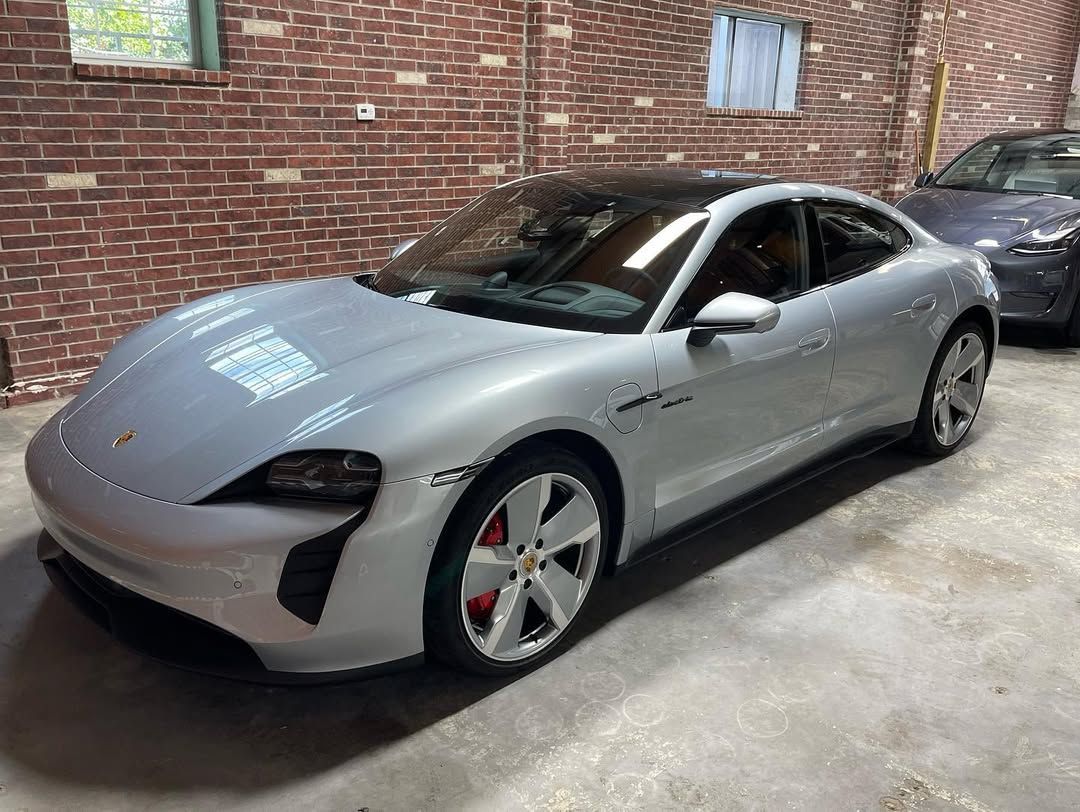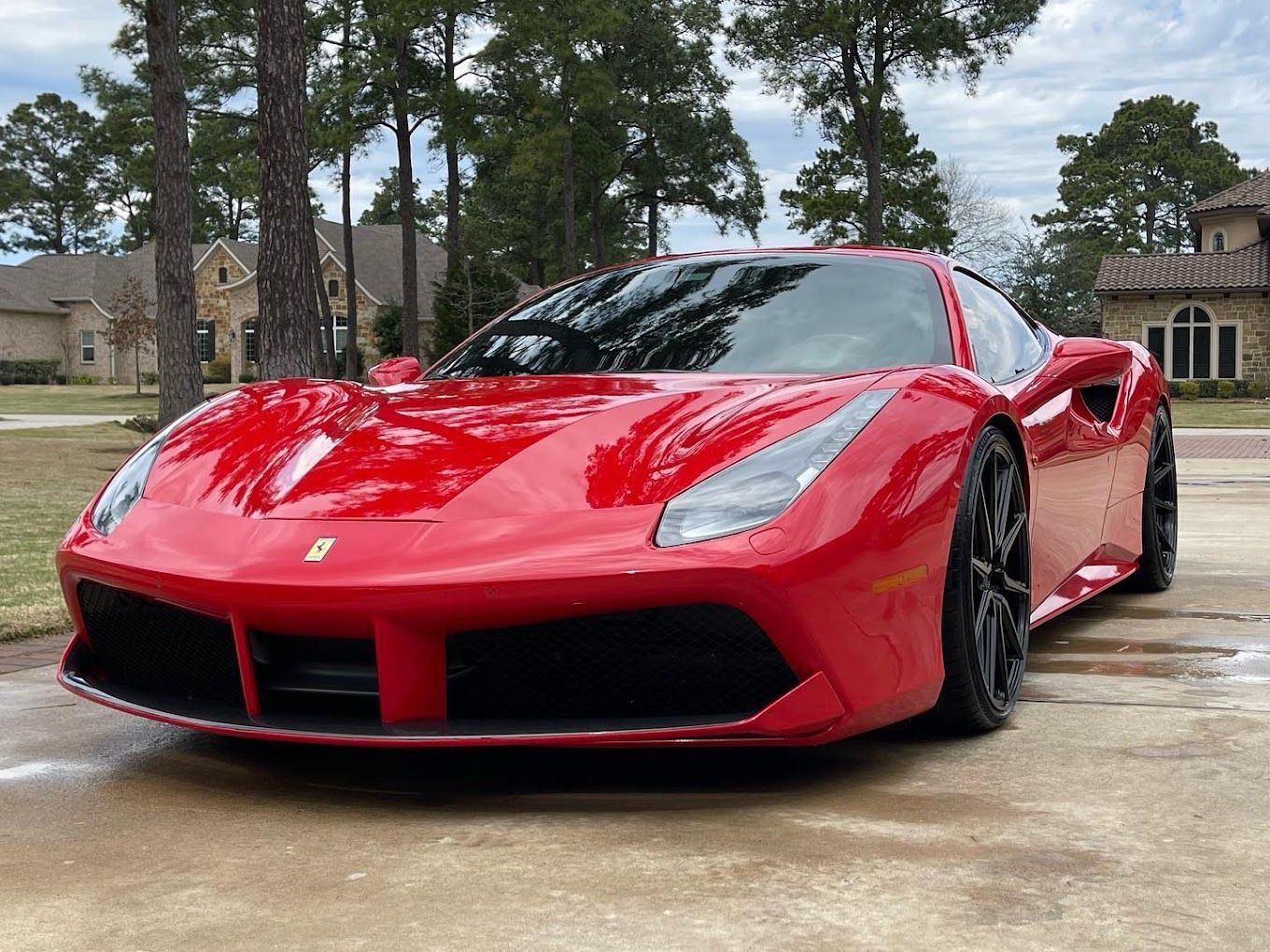Interior Detailing Process & Its Importance in Your Car's Interior Maintenance
GET A QUOTE NOWCALL (281) 705-3482
When it comes to cars, appearance can be everything. But, having a detailed interior is more than just a showpiece - it's important for safety, customer back, comfort, and a sense of pride of ownership. But achieving a perfectly detailed interior isn't the easiest task, which is why we've put together this ultimate guide on car wash interior detailing. You'll learn the basics of doing car wash detailing for the interior of your car, allowing you to truly optimize the condition of your vehicle. We'll discuss the essentials, as well as some simple tips and tricks to maximize the car wash detailing process. So get ready to show your car some love and get started with this guide to car interior hand wash detailing!
Understanding the Interior Detailing Process
Having a deep understanding of the car interior detailing process is the first and most important step to achieving stunning results. People approach the interior detailing process in different ways and there is no one size fits all approach; some may prefer to clean the surfaces with specific products while others may want to consider steam cleaning or using a wet vacuum cleaner. It is important to understand the materials used in your vehicle so that you don’t end up damaging it, such as wiping down leather seats with a cloth that could cause extreme damage if it’s too abrasive. Additionally, taking into account how much time you have, how often you plan on maintaining the detailing process, and what kind of results you want to achieve are all factors that should be considered.
To move along the process of detailing your car interior, the next step is to systematically clean each surface that needs attention and detail - starting from top to bottom. This cannot be overlooked as it not only needs careful consideration on which cleaning product to use, but also it allows us an opportunity to identify any stains or marks that might require further attention.
Cleaning the Interior Surfaces
Now that we have a strong understanding of the interior detailing process, it's time to start cleaning! All interior surfaces should be thoroughly cleaned before they can be detailed. This includes the major components such as the upholstery and carpets but also includes all the smaller surfaces such as the dashboard, door panels, and fabric trim.
Cleaning these surfaces is essential for proper detailing. Many people think that vacuuming and dusting will suffice but potential contaminants like dirt, grime, and oil can easily build up on these surfaces over time. Additionally, if a protective coating is being applied (such as wax or sealant) then these surfaces need to be clean in order for it to properly bond and last long-term. When cleaning surfaces, it’s important to choose the correct product for its surface material. It’s recommended to use specialized products formulated for car interiors – either specifically made for the type of surface material or labeled as ‘Interior Cleaner’.
In some cases, mild cleaning with water-based solutions may be sufficient. But more problematic stains may require stronger treatments such as bug/tar removers or leather cleaners & conditioners. It’s important to always follow instructions when using these types of products as they often contain harsh chemicals which could potentially damage surfaces beyond repair if misused.
Using quality tools is also essential when cleaning – soft cloths and brushes are essential when dealing with delicate materials, while stiff brushes and air compressors are ideal for removing dust, dirt, and debris from hard-to-reach places. After cleaning, any excess moisture should be wiped off with a microfiber cloth to prevent mold or mildew from forming.
Now that we've covered the basics of cleaning interior floor mats and exterior surfaces, let's move on to another important step in our carpet detailing process – Vacuuming and Dusting!
Important Details to Keep in Mind
Before any interior detailing process begins, all surfaces must be thoroughly cleaned. This includes major elements such as upholstery and carpets as well as smaller parts like door panels and fabric trim. Cleaning products should be chosen carefully to match the surface material, and mild water-based solutions or harsher treatments such as bug/tar removers or leather cleaners & conditioners can be used depending on the location of the stain. Tools such as soft cloths, brushes, air compressors, and microfiber cloths should also be used. After cleaning is complete, vacuuming and dusting should commence.
Vacuuming and Dusting
Once the surfaces of your car’s interior have been wiped down, it’s time to move on to vacuuming and dusting. Vacuuming is an important part of detailing as it helps to clear out any dirt, debris, or food crumbs from in between seats and into those tight crevices of the floor. Depending on what vehicle you own, there are a variety of vacuum attachments you can use for those hard-to-reach areas like around car pedals and seat creases. For smaller parts of the car, a handheld vacuum powered by a rechargeable battery is great for removing dust and dirt from vents.
Dusting your car’s interior with a microfiber cloth will help remove any pesky dust residual that might have been missed when vacuuming. Consider using a cotton swab to get into all the nooks and crannies before wiping them off with an anti-static cloth specially designed to repel dust particles. To maximize dust removal, experts recommend going over each area twice.
Now that we have completed the steps for the service of deep cleaning and dusting your car’s interior, we can move on to the next stage of detail service, the detailing service and services which focuses on using cleaners and sprays to leave your car looking lustrous and sparkling inside out.
Cleaners and Sprayers
The next step in the car interior detailing process is to clean the dashboard and other surfaces with a mixture of cleaners and sprayers. Cleaners can be purchased from automotive supply stores or online. All-purpose cleaners, surface cleaners, and leather cleaning solutions are popular picks. An all-purpose cleaner can be used for various surfaces as it is formulated to remove dirt, dust, greasy residues, and stains from automobile fabrics, vinyl, plastic and leather. Surface cleaning products safely remove stubborn dirt, wax residue and bugs, etc., while a leather cleaning solution further removes soiling or rough spots associated with leather surfaces.
A sprayer can be used to apply the cleaner evenly throughout the interior of the vehicle. A foam sprayer is optimal as it mixes air with the product to create an even foam spray that bonds with contaminants on contact causing them to break away. Using a foaming sprayer ensures that there isn’t any excess liquid in the vehicle - since a large amount of water being sprayed on the dashboard can cause damage such as warping or cracking over time.
When using products to detail your vehicle’s interior it's important to read thoroughly through the ingredients and instructions provided by the manufacturer before starting your cleaning job. It is recommended to do spot-checking for colorfastness prior to use in case of carpets or fabrics that may run when wet. Test discreetly on an inconspicuous area first before attempting to apply more product over a larger area as certain components inside car interiors may be adversely affected by some cleaners.
Once you have prepped your workstation and tested out all necessary chemicals it's time for you to start removing contaminants that are deep-rooted onto any car surfaces.
Removing Contaminants
Once all the necessary cleaners have been gathered and applied, it is now time to rid the interior of the car of any contaminants. This stage outlines the necessity of using the right materials to deep clean the most difficult parts of the car's interior. In some cases, like with leather seats, a soft brush should be used to scrub in order to avoid any tearing that blunt objects can cause. For harder crevices, like in between door panels and vents, cotton buds work best for losing pieces of hair or dirt lodged in tight spaces.
When dealing with fabrics and upholstery, steamers can be used for sanitization purposes but may not always be available. For surfaces where covering sand or particles are present, vacuums usually do an excellent job of eradicating potential issues. Whatever tool is chosen for this particular process, care must always be taken so no damage is done to the overall aesthetic look of the car's interior.
Now that all undesired particles have been removed from the car’s infotainment system and seating area it’s time to move on to tougher substances such as oil, tar, debris, and food stains. While these may seem impossible to remove, if approached correctly one owner can utilize specific products designed for this purpose to ensure a seamless removal process with no lasting damage.
By being diligent when dealing with contaminants in your car's interior you can make sure that regardless of what life throws at it, your vehicular investment looks immaculate inside and out! Now that we have successfully eliminated all unwanted material from the vehicle’s interior cabin let us move on to using shampoo and certain alcohol-based products that can further restore its original state before any signs of wear or tear became visible.
Alcohol and Rubbing
The process of car detailing involves a wide range of combinations of thorough cleaning and restoring techniques with many different products. The use of alcohol and rubbing is one of the uppermost important steps when it comes to car detailing. For example, alcohol has been used as a way to remove dirt, stains, wax residue, and more from car surfaces.
On the other hand, some argue that the use of rubbing can potentially damage a car's interior surfaces depending on the materials used. This argument suggests that the type of material you choose for the rubbing should match your car's surface in order to prevent scratches or other damages.
It is important to consider both sides when using alcohol and rubbing during the car detailing process. Make sure to choose the right product and material before applying them to your vehicle’s both interior and exterior surfaces. If done correctly and carefully, this step of auto detailing will ensure that your car’s surfaces look their best without causing any damage.
Once you remove all the contaminants from your car’s interior surfaces using alcohol and rubbing properly, it's time to move on to waxing and polishing in order to restore its shine. Working by degrees - from cleaning through waxing detail - allows you to get that desired showroom finish.
Waxing and Polishing
After all of your car’s surfaces have been wiped down with rubbing alcohol, it's time to add a little protection. Waxing and polishing can be great for adding some shine and protection against scratches. Some waxes contain abrasives that also help boost an older car's sheen by removing small scratches. Polishes work differently, as they actually fill in the microscopic pits that form on many of your car’s surfaces from harmful substances such as salt and acid rain. Waxes are typically only applied once every couple of months, while polishes should ideally be done more frequently.
Having cleaned, sanitized, and even polished up all the exterior, doors, and interior sections of your vehicle, you're ready to take the next step: protecting them with leather creams and conditioners to help keep everything looking new for years to come.
Protecting and Maintaining Leather
The next step in achieving the ultimate car interior detailing process is protecting and maintaining leather. Leather is a porous material, so it should not be treated with wax. Waxing or polishing leather may lead to darkening, drying, and/or cracking. The best way to protect and maintain leather is through conditioning.
Conditioners are specially designed to penetrate into the hide of the leather, replenishing its oils and restoring flexibility to prevent drying, cracking, fading, and other damage caused by normal wear and tear. However, one should exercise caution when selecting a conditioner as some can cause discoloration and may actually degrade the leather over time. It is always advised to select conditioners specifically made for automotive use as they are more effective in preventing damage than those intended for use on home furniture.
It is also important to clean leather frequently in order to remove dirt and debris that can accumulate over time and compromise its longevity. Use specialty leather cleaners that are specifically designed for automotive use. These cleaners will remove surface dirt without causing any harm or damage to the leather itself. As with any cleaning product, test it on an inconspicuous area first before using it on the rest of the carwash or the interior as certain chemical cleaners can cause discoloration or even deterioration of the material. Once cleaned, allow the leather to dry naturally; never force dry it with a blow-dryer or heat gun as this could cause further damage.
The Importance of Cleaning and Detailing
Regular interior car maintenance helps protect the integrity and value of your vehicle. Interior care also ensures your clients and customers' safety and comfort while driving, as it can help your vehicles reduce odors, clean away dirt and debris, and ensure all internal components are functioning properly.
Interior Detailing Latest Techniques and High-Quality Products by Chow's Detailing
Is your car's interior in need of some TLC? Let Chow's Detailing help you! Our interior detailing process is designed to thoroughly clean and rejuvenate your vehicle's cabin, leaving it looking and smelling like new. We use the latest techniques and high-quality products to remove dirt, stains, and unpleasant odors, providing you with a fresh and inviting driving experience. Not only will our interior detailing services to improve the look and feel of your car, but they're also essential for maintaining its overall value. Regular interior car detailing services can help prevent wear and tear and prolong the life of your vehicle's interior. Don't wait any longer to give your car the attention it deserves. Visit our website to learn more and schedule your next interior detailing service appointment today!








